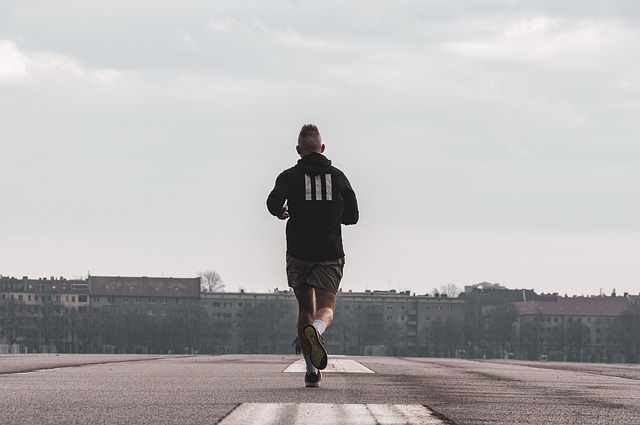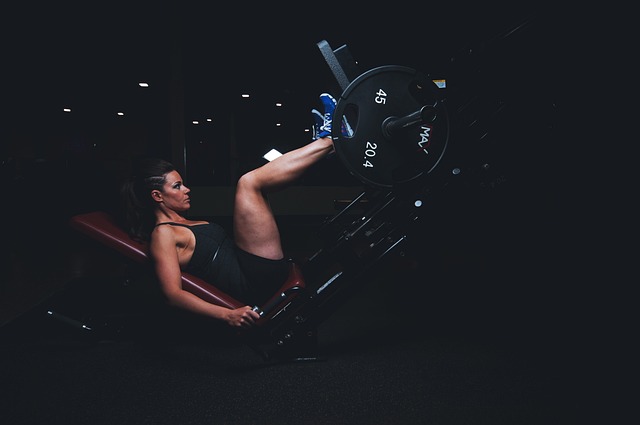Running is a popular exercise but requires prioritizing runner safety. Before heading out, scan for hazards and invest in essential running gear like reflective clothing, headlamps, and proper footwear. Personal safety for runners involves mindfulness, carrying ID, sharing routes, and using hand signals. During low-light conditions, reflectivity and lights are crucial. Hydration and nutrition are vital, especially during hot weather. Using apps, staying alert, and securing essentials further enhance safe running gear. Adapting to weather and carrying communication devices offer running protection advice for optimal runner safety tips.
Staying safe while running is a priority for every athlete. Our comprehensive guide, “Essential Gear and Tips for Runner Safety,” equips you with the knowledge and tools to navigate your runs confidently. From understanding your environment and securing essential running gear to lighting, hydration, personal safety measures, and weather awareness, this resource covers it all. Discover expert advice on runner protection, ensuring every step is a safe one, mile after mile.
- Understanding Your Environment: Scanning for Potential Hazards
- Essential Running Gear: Protecting You Mile After Mile
- Lighting and Visibility: Seeing and Being Seen
- Hydration and Fueling: Staying Ahead of Dehydration and Fatigue
- Personal Safety Measures: Tools to Ensure Your Well-being
- Weather Awareness: Preparing for All Conditions
Understanding Your Environment: Scanning for Potential Hazards

When running, it’s crucial to stay alert and aware of your surroundings. Understanding your environment is a vital part of runner safety tips. Before heading out, take a moment to scan for potential hazards such as uneven terrain, traffic, or poorly lit paths. Essential running gear includes items like reflective clothing and a headlamp if you’re planning to run at dawn or dusk. Personal safety for runners can also be enhanced with a noise-cancelling headphone that allows you to listen to music without being completely cut off from your surroundings.
Running protection advice extends beyond just the gear; it’s also about practicing mindfulness. Be conscious of changes in the terrain and adjust your pace accordingly. Stay on established trails or roads to avoid unknown risks. Safe running gear, such as a sturdy pair of shoes and moisture-wicking clothing, not only provides comfort but also helps prevent injuries. Runner protection tips should also include carrying identification and letting someone know your route before heading out for a run.
Essential Running Gear: Protecting You Mile After Mile

Running is an excellent form of exercise and a popular way to stay active, but ensuring runner safety should never be overlooked. One of the best ways to safeguard yourself mile after mile is by investing in essential running gear. This includes high-quality athletic shoes that provide adequate support and cushioning, reducing the risk of injuries. Wear moisture-wicking clothing designed for runners; these fabrics help regulate body temperature and keep you comfortable during your runs.
Don’t underestimate the power of reflective gear, especially if you run in low-light conditions or early morning hours. Wearing reflective clothing or carrying a light ensures that motorists can see you, enhancing your personal safety for runners. Additionally, consider incorporating a running belt or backpack to securely store essential items like ID, cash, and keys without hindering your movement. Remember, being prepared with the right gear is a crucial aspect of runner protection advice, ensuring a safer and more enjoyable running experience.
Lighting and Visibility: Seeing and Being Seen

Running in low-light conditions or at night can significantly impact your safety. Always opt for reflective clothing, including jackets, shoes, and leg bands, to ensure drivers and other runners can spot you easily. Incorporate lights into your running gear, such as a headlamp or clip-on LED lights, especially if you frequently run before dawn or after dusk. These measures enhance your visibility, making you more predictable to others and reducing the risk of accidents.
In addition to wearing reflective attire, consider using hand signals when running in urban areas. Make yourself visible to traffic by raising your arms at an angle to indicate turns. Additionally, stay on well-lit paths or roads, and if possible, run with a partner or a group for enhanced personal safety for runners. These simple runner protection tips can go a long way in ensuring a safe running experience.
Hydration and Fueling: Staying Ahead of Dehydration and Fatigue

Staying hydrated and properly fueled is an essential part of any runner’s routine, especially when it comes to safety. Dehydration and fatigue can quickly escalate during long runs or in hot weather conditions, leading to dizziness, muscle cramps, and even more severe health risks. To combat this, runners should pack light yet effective hydration gear, such as a water belt with multiple pockets for easy access or a lightweight, well-insulated water bottle. Aim for consistent refills every 15-20 minutes during extended runs, adjusting the pace according to your body’s needs.
In addition to fluids, runners should fuel up with high-energy snacks like energy gels, chews, or bite-sized bars packed with essential vitamins and minerals. These quick sources of energy can be easily carried in a small running pouch or belt pocket, ensuring you stay energized without slowing down. Combining effective hydration and fueling strategies is key to enhancing runner safety, preventing injuries, and enabling a more enjoyable and sustainable running experience.
Personal Safety Measures: Tools to Ensure Your Well-being

Staying safe while running is a priority for any avid jogger. Implementing personal safety measures and equipping yourself with essential running gear can significantly enhance your experience and protect against unforeseen hazards. One crucial tool in ensuring your well-being is investing in high-quality, reflective clothing, especially if you run during low-light conditions or at night. Bright colors and reflective strips on your apparel make it easier for drivers and fellow runners to spot you, reducing the risk of accidents. Additionally, consider incorporating a personal safety device like a global positioning system (GPS) watch or a smart phone with running apps that can track your route and provide emergency services if needed.
Another vital aspect of runner safety tips is staying prepared with the right gear. This includes wearing appropriate footwear designed for running to prevent injuries and improve performance. Carrying essential items like an ID, cash, or card in a secure fanny pack or belt is also important. Moreover, being aware of your surroundings and trusting your instincts can serve as powerful protection advice. If you notice any suspicious activity or feel unsafe, trust your judgment and alter your route or seek assistance promptly.
Weather Awareness: Preparing for All Conditions

Running is an outdoor activity that exposes individuals to various weather conditions. Therefore, being prepared for all conditions is a crucial aspect of runner safety tips. It’s essential running gear includes items that protect against harsh elements while allowing freedom of movement. For cold weather, layers of clothing, waterproof jackets, and gloves are vital. Reflectors and lights become indispensable during low-light or night runs to enhance personal safety for runners. In contrast, hot weather calls for breathable fabrics, light clothing, and hydration gear to prevent heat exhaustion.
Understanding local weather patterns and checking forecasts before heading out is running protection advice that should be followed. Extreme conditions like thunderstorms, heavy rain, or high winds may require adjusting your route or timing. Safe running gear also includes a means of communication, such as a smartphone with a fully charged battery, to call for help if needed. Additionally, carrying an emergency kit containing essentials like a small first aid kit and energy bars can provide crucial protection tips for runners.






